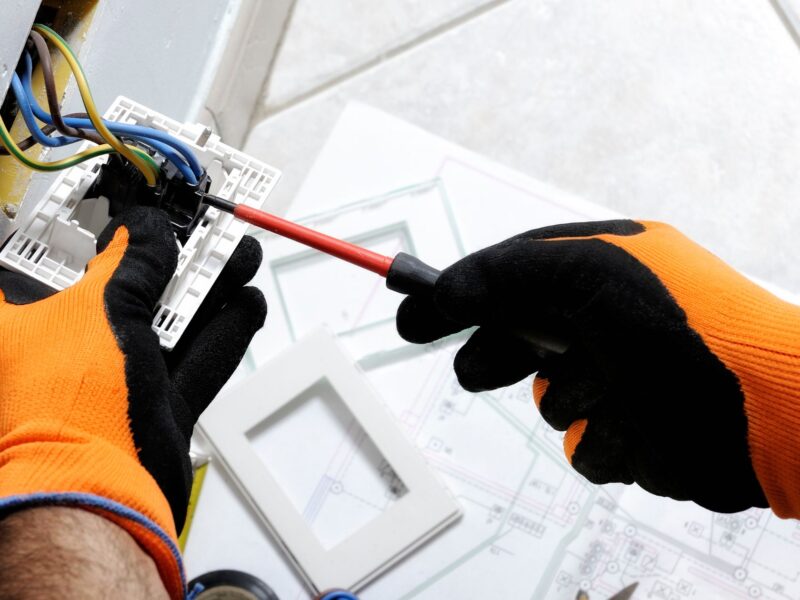DIY Electrical Tools That Perform Multitasking!
Electrical work, like any other home repair or renovation, requires the use of specialised equipment. Most of the time, you’ll be using hand tools that you might already be having, such as a tape measure, level, hammer and screwdrivers, to complete your household electrical jobs. There are also certain specialised electrical tools that may be useful from time to time, and they can be found at most home centres, hardware shops, electrical supply stores, and internet merchants, and among other places.
When working on a project at home, tools such as voltmeters, fish tape, and flashlights may be quite useful to have around. Higher-quality tools, like any other electrical tool purchase, will have a longer life and provide greater performance than lower-quality tools. Better electrical hand tools, such as wire cutters and linesman pliers, are designed with insulated handles to assist in protecting the user from being electrocuted.
Serial No. | Electrical Tools Names | Electrical Equipment Images | Available |
1 | Tape Measure | ||
2 | Hammer | ||
3 | Torpedo Level | ||
4 | Flashlight | ||
5 | Utility Knife | ||
6 | Screwdrivers | ||
7 | Straight-Blade Screwdrivers | ||
8 | Allen Wrench Set (Hex Set) | ||
9 | Tongue-and-Groove Pliers | ||
10 | Non-Contact Voltage Tester | ||
11 | Wire Strippers | ||
12 | Needle-Nose Pliers | ||
13 | Linesman Pliers | ||
14 | Diagonal Cutting Pliers | ||
15 | Fish Tape | ||
16 | Voltmeter or Multimeter | ||
17 | Wire Crimpers | ||
18 | Electric Drill | ||
19 | Insulated Gloves |
Electrical tools and their uses –
We have listed some of the electrical tools and pictures with their uses for your different DIY projects.
1. Hammer –
Nail-on brackets on electrical boxes are attached to the wall studs and other framing parts of a house using a hammer. In addition, you’ll need one to drive wire staples into frame members while securing new electrical wiring.
2. Tape Measure –
To establish switches, outlet heights, centre lighting fixture boxes, and mark surfaces for cuts, a conventional tape measure is utilised in the field.
3. Straight-blade Screwdrivers –
Straight-blade screwdrivers, like Phillips screwdrivers, are likely to need a variety of sizes. With just one option, select a medium-sized blade. It will work well for most applications.
There are also insulated-handled straight-blades at Find Your Mechanics. Also, screwdrivers are responsible for your enhanced safety while working with electricity.
4. Torpedo Level –
There are several different types of torpedo levels that may be used to ensure that your work is perfectly level and plumb. Using level boxes and straight switches and outlets is the foundation of a quality installation.
In addition to electrical work, a torpedo level may be used in a variety of different ways by any household.
5. Flashlight –
Basements, walls and ceiling cavities, attics and the insides of electrical boxes are just some of the sites where electrical repair and upgrade work takes place much often. For both safety and convenience, a tactical flashlight is essential. The toolkit of a do-it-yourself electrician should include a headlamp, as well as a few small flashlights.
6. Utility Knife –
Basically a box cutter! Cutting and sheathing off non-metallic (Romex) cable, removing electrical tape, and opening cardboard boxes are all made easier using a utility knife or box cutter.
7. Allen Wrenches –
Using an allen wrench to tighten hex-head screws on light fixtures, ceiling fans and appliances is a common practice. Allen wrenches come in both standard and as well as metric sizes.
8. Tongue and Groove Pliers –
These pliers are most often used for plumbing, but they also have a wide range of applications in the electrical field. They tighten cable clamps, removes knockouts from metal electrical boxes and adjust expansioning ceiling fan boxes.
9. Voltage Tester –
A voltage tester is one of the most critically specialised electrical tools you may possess. You may use a voltage tester to do a fast safety check before working on an electrical line or equipment to ensure there is no voltage present. In terms of safety, non-contact voltage testers powered by batteries, happen to be the most simple and convenient to use.
This is a must-have tool for any DIYer. Almost all house electrical repair projects will call for it.
10. Needle Nose Pliers –
A set of needle-nose pliers is another vital speciality electrical equipment (also called long-nose pliers). When connecting screw terminals, you’ll need to bend and twist wires using this tool. Their long and thin tips make it an excellent tool for fine work. Cutting jaws are often seen on needle-nose pliers.
11. Linesman Pliers –
Electrical Linesman pliers are electrician’s go-to workhorse tools. With a squared-off end for twisting wires, a cutting blade in the middle for trimming wire, and a gripping area given between the handles for pulling wire, this tool has it all!
A set of linesman pliers is a must-have item for anybody who works with electricity on a daily basis.
The above electrical tool names and pictures suggest how they can be used by DIYer to solve their everyday issues at home or workplace. However, some of them are for advanced DIYers as well.




















